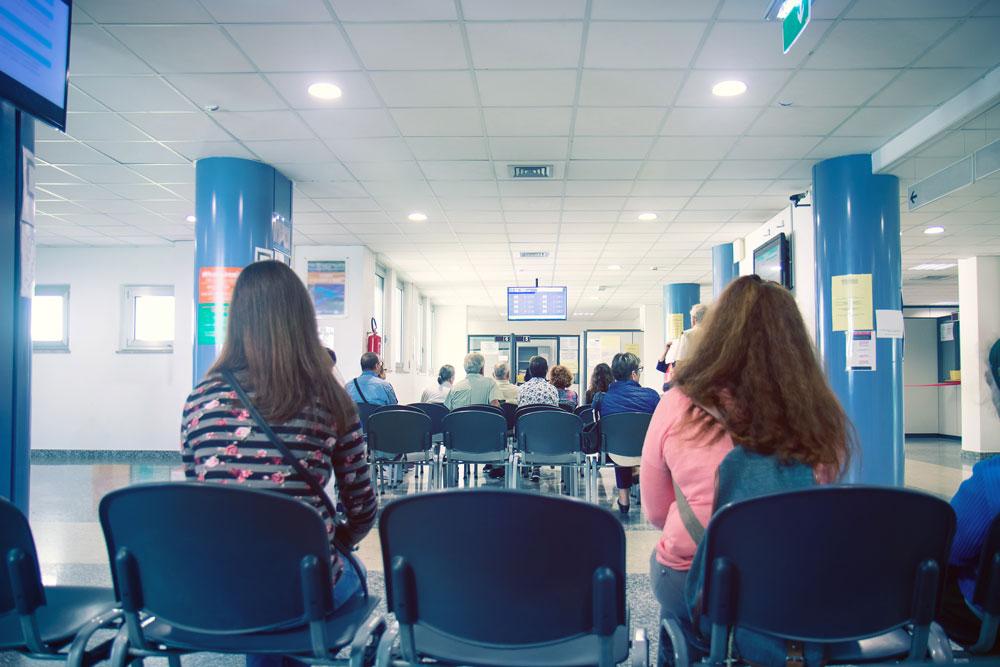Sarah Day, Policy and Research Manager at the Healthcare Financial Management Association, discusses the recent Health and Care Bill and what it means for NHS finances and financial sustainability
As we move ever closer to a new financial year and the next iteration of the NHS structure, finance staff are once again grappling with new organisational forms, retaining corporate memory, and ensuring that systems are in place to allow all necessary payments to be made on 1 April 2022. Many in the NHS will be used to these changes, restructures are commonplace, but this time it is against a backdrop of high demand, elective backlogs, staff shortages and the ever-present threat of Covid-19.
Although the Health and Care Bill is still working through normal parliamentary process, the preparations for next year cannot wait for it to pass. Restructuring is carried out by many on top of their day job and establishing a new organisation takes time. But what do the changes mean for the future financial sustainability of the NHS and the wider health and care system?
Covid-19 demonstrated what could be achieved when organisational boundaries were removed and the bill seeks to build on that, by putting collaborative behaviours into legislation. While local systems have been attempting to work in this way for some time, the current requirements under the 2012 Act limited how easily parts of the NHS could work with one another and local authority colleagues. However, fundamental to the success of the Covid-19 regime was the removal of financial constraints; it is a lot easier to work together when you don’t need to argue about who is paying for what. But that is clearly not a sustainable approach in the long term.
Developing system working
System funding envelopes seek to provide a way to allow organisations to work together to meet a common financial target. Assuming that the Health and Care Bill is passed, from 1 April, integrated care boards (ICBs) will become the statutory body that manages this envelope, with national allocations going directly to ICBs. Financial flows within systems will still be linked to contracts and organisations will retain their own statutory duties to break even. However, the aligned payment and incentive system, expected to be introduced in April, will support a more transparent way of working.
The simplified payment system during the pandemic saw organisations receiving block payments to cover all activity, removing the need for contract reconciliations and a multitude of invoices. Many welcomed this approach as it not only freed up staff to undertake more value-added activity, it also gave a certainty of income (and expenditure for commissioners). The aligned payment and incentive approach will be made up of fixed and variable elements to build on this experience. The majority of payments will be on a fixed basis, using agreed activity and costs, with a much smaller variable element to incentivise particular priorities, such as addressing the backlog of care. The process of agreeing these payments will require organisations in all parts of the NHS to work together to collectively agree upon the healthcare priorities for their population. Relationships and transparency will be key to success.
Many local systems already recognise that working together is the way to better address population need, in health, social care, and the wider determinants such as housing and employment. The concept of a ‘local pound’ is widely used. This enables organisations to nominally combine resources and consider where public money can be spent to best effect.
The challenge of social care funding
It is widely accepted that social care is underfunded and in need of wider reform. As local government funding has fallen, the pressure to fund social care through local means has increased. This means that many local authorities have needed to raise eligibility criteria for care and cut services, which often include those that support good health and wellbeing. At a time when the NHS is seeking to invest more resource in the prevention of ill health, local authorities are often being forced to do the opposite.
It was hoped that the government’s plan to Build back better would at least begin to address some of these issues. But the political focus was on preventing individuals from incurring ‘catastrophic costs’ in order to pay for care. This was set out explicitly in the plan, with the extension of capital limits in the means test and the cap on care costs. Even though this pledge is now not what it first seemed, with changes to the cap in recent days, it increases the burden on local government as it means that more people will be eligible for publicly funded care, so increasing overall costs.
While the plan is accompanied by a new health and social care levy to cover these additional costs, the plan states that existing pressures must continue to be met from short-term measures such as council tax and the social care precept. Therefore, the plan does nothing to help the sector onto a more sustainable financial footing in the short term, with the extra funding raised through the new levy being initially targeted at the NHS. The Budget set out £4.8 billion of new grant funding for local government, but this was for all council services, not just social care – a long term settlement to address the challenges in social care still seems a long way off.
Local systems recognise the interdependence between health and social care. Investment in the latter is essential to support the whole population as it enables people to receive the care that they need in the right place. However, at a national level, the two remain resolutely separate with the wider implications of funding decisions largely ignored.
Long term NHS financial sustainability
Key to long term NHS financial sustainability is the ability to plan, as well as having access to the resources that are needed. The recent boost to revenue funding in the Budget, is welcomed. However, the way in which funding arrives with local systems does not always support long term planning. Much of the additional resource is allocated on top of baseline funding and arrives at different points in the year. It is not always clear whether the funding will be recurrent or not, and sometimes there are a number of conditions that limit local discretion around how the resources are used. Making long-term, sustainable, changes to services can therefore be challenging.
The Budget also set out a three-year capital settlement which will address a number of concerns around capital planning; projects can rarely be initiated and completed within a single year. Within the capital settlement are earmarked funds to tackle the elective backlog, through development of surgical hubs, community diagnostic centres, and investment in digital technologies. All welcome developments, but not quick fixes for those already waiting for a long time for treatment.
The majority of NHS spend is on workforce and this is becoming a significant challenge. The Budget was silent when it came to the NHS workforce, with no identified settlement for Health Education England (HEE), and no certainty over the future pipeline of staff. A plan is expected in the spring but, with the expected merger of HEE with NHS England in the summer, it is possible that timings could change. The workforce challenge limits what can be achieved, even if the health and care system had sufficient funding. New services need new staff, often with different skills. Without sufficient staff, investment that is earmarked to transform services risks destabilising core provision as staff choose to move to new roles, without the people being there to replace them.
Opportunities for the future
While there are many challenges for the health and care sector, there is much to be positive about as we look to the future. Putting integrated care systems onto a statutory footing will remove many of the barriers to joint working, making it much easier to collaborate. This should create a more seamless experience for patients, as they move between organisations. Provider collaboratives will see trusts working together to deliver care that has been designed as a whole system, rather than in organisational silos.
Financially, this has got to be a better approach, enabling new efficiencies to be found through working together, delivering care in the most appropriate setting, and reducing duplication. Shared financial targets will support finance teams to work together to get the most value from the allocated resources. It is these networks and relationships, across the whole of the NHS and social care, that will ultimately make integrated care systems work, despite the challenges.





